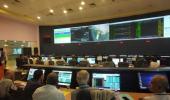Indian Space Research Organisation Chief K Sivan has claimed that the Vikram Lander of Chandrayaan-2 had been spotted by the space agency's own orbiter much ahead of NASA, which on Tuesday announced that it had located the debris of Vikram's crash landing on the moon in September last year and credited a Chennai-based engineer for the finding.

"Our own orbiter had located Vikram lander. We had already declared that on our website, you can go back and see," said Sivan while speaking to reporters on Tuesday.
ISRO chief's comments came after NASA said that it had found the remains of the Vikram lander by its Lunar Reconnaissance Orbiter and credited the discovery to Chennai-based amateur astronomer and engineer Shanmuga Subramanium.
On ISRO's website, a statement on September 10 says, "Vikram lander has been located by the orbiter of Chandrayaan-2, but no communication with it yet. All possible efforts are being made to establish communication with lander."
On December 3, the American space agency NASA had in a tweet said, "The #Chandrayaan2 Vikram lander has been found by our @NASAMoon mission, the Lunar Reconnaissance Orbiter. See the first mosaic of the impact site."
NASA posted images clicked by its Lunar Reconnaissance Orbiter Camera, showing the site's changes on the Moon and the impact point before and after the spacecraft had made a hard-landing on the lunar surface.
It also indicated the impact spot of the lander and an associated debris field created by the crash with blue and green dots respectively.
The Vikram lander was to soft-land on the far side of the moon at on September 7.
Minutes before its scheduled soft-landing, communication with Vikram Lander was lost.
It was 2.1 km above the moon's surface when it lost contact with the ground stations.
The lander successfully separated from Chandrayaan-2 Orbiter on September 2. After revolving around the Earth's orbit for nearly 23 days, the craft began its journey to the moon on August 14.
The mission took off from the Satish Dhawan Space Centre in Sriharikota on July 22.











 © 2025
© 2025